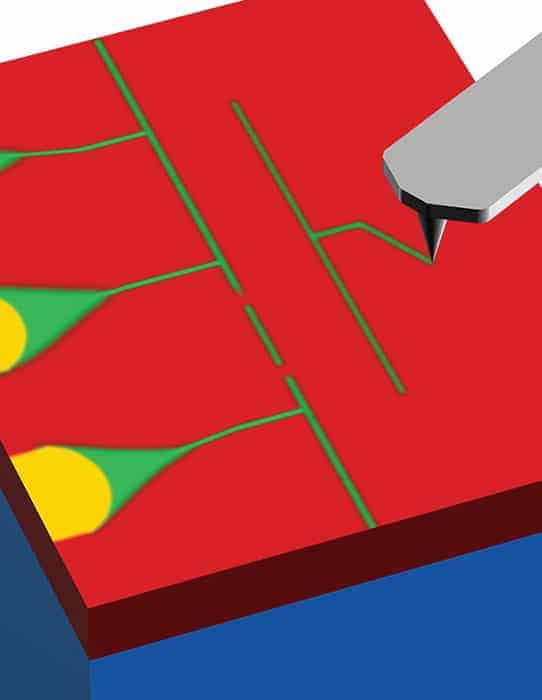
The most direct evidence so far that Cooper pairs of electrons can exist in a material above the critical temperature for superconductivity has been claimed by Koen Bastiaans and Milan Allan of Leiden University in the Netherlands and colleagues. Their work builds on previous research suggesting that electron pairs could be responsible for the mysterious pseudogap state in unconventional superconductors. In the new work, however, researchers have detected Cooper pairs in a superconductor above the critical temperature, but without a pseudogap.
The classical (or BCS) theory of superconductivity states that, below a specific critical temperature, the fermionic electrons in a metal pair up to create bosons called Cooper pairs. These bosons form a phase-coherent condensate that can flow through a material without scattering – the result being superconductivity.
However, BCS theory does not explain the superconductivity of unconventional superconductors such as cuprates, pnictides and disordered materials. Whereas the resistance of a metal usually drops as the material cools down, many of these unconventional superconductors experience a sudden change in their electronic band structure that can cause their resistance to rise at temperatures just above the critical temperature.
Breaking pairs
This change is known as a pseudogap and some physicists have proposed that it occurs because electrons form pairs at temperatures above the critical temperature – but these pairs do not form a superconducting condensate. “One argument is to say that if the electrons are paired and you want to take one out with a [scanning tunnelling microscope (STM)] probe, you need to pay the energy of breaking a pair,” explains Allan.
Previous research has found evidence for the existence of paired electrons above the critical temperature in various systems. In 2015, for example, Jeremy Levy of University of Pittsburgh and Pittsburgh Quantum Institute, both in the US, and colleagues created a single-electron transistor that, when the electron density was high enough, behaved as a superconductor. As the electron density was lowered, however, the transistor left the superconducting regime, but the electrons continued to pass through the device in pairs.
Allan and colleagues have taken a different approach as they have described in a paper in Science. They cooled a titanium nitride surface to below its critical temperature and measured the tunnelling current between the surface and an STM tip at various bias voltages. This allowed them to map out the band structure of the material. More specifically, as the bias voltage – and hence the tunnelling current, increased – they focused on changes in the “shot noise”. This is the random fluctuation in the current arising from the fact that charge is quantized, either as single electrons or as pairs of electrons. Cooper pairs carry double the charge, and therefore their presence can be identified by greater shot noise. “My opinion is that our probe is cleaner and more direct,” says Allan.
“Two paradigms”
The researchers found clear evidence that, though the sample ceased to be a superconductor at 2.95 K, the shot noise only dropped from that of Cooper pairs to that of electrons when the temperature rose above 7.2 K. The bizarre aspect is that titanium nitride does not have a pseudogap. “From a physics point of view, I find this very fascinating, because there are these two paradigms – one is electron pairs in a superconductor, the other is a good metal made out of fermions,” says Allan. “Ours is a good metal: it doesn’t have a gap. But it looks like our metal is made out of pairs, which are more like bosons than fermions. We didn’t discover anything new about the pseudogap, but we put some of these discoveries in context.”

Electron pairing without superconductivity seen at long last
Kamran Behnia of EPSCI Paris Tech in France does not find the results as surprising as the researchers. “As [they] mention [in their paper], other experiments have documented that short-lived Cooper pairs survive in the normal state of a superconductor despite the destruction of the superconducting order,” he says. “In the standard theory of superconductivity short-lived Cooper pairs are expected. However, in the context of the cuprate superconductors, the expression ‘preformed pairs’ has been used as a shorthand for a conjecture according to which the pseudogap is a precursor to superconductivity”.
Levy, however, believes the findings are notable. “In this disordered system I think it was expected that there would be a strong correlation between the gap phase and the existence of these pairs,” he says. “I hope that in the future we’ll say ‘Oh, it’s not surprising because of our increased understanding’ and that’s how science should work – it goes from being a paradox to being explained or incorporated into a larger understanding. That’s why experimentalists do their experiments.”



